Did you have a plush bear that was a constant companion during your childhood?
If you’ve ever noticed, no matter which store sells plush toys, plush bears are often the most varied and numerous.
Even in your emoji collection, there’s probably at least one bear emoji per person.
So, when did bears start dominating the plush toy scene?
01
Plush Bears Rule the Roost
If you check the plush toy rankings on Amazon, whether it’s for top-selling items or popular picks, plush bears are almost always in the top ten.
Even if you haven’t bought a plush toy in ages, you’ve likely fallen for the charm of these cuddly creatures.
Among the many plush toy brands, there are numerous with “bear” in their names: Memorial Bear, Build-A-Bear, Thanks Bear, Bear Factory, Flatout Bear…
Almost every toy brand has a line of plush bears, and some even list bears at the very top of their catalogs.
For example, a certain plush toy brand categorizes animals by type, and even if the brand’s name doesn’t include “bear,” they still offer popular plush bears. Disney’s Duffy Bear has captured the wallets of many plush toy enthusiasts. There are numerous brands making teddy bears, from the historically significant German brand Steiff, which creates collectible teddy bears, to the more budget-friendly options like Gund, Hermann, Kosen, and Aurora.
IKEA’s plush toys often get criticized for being unattractive, but their chunky, somewhat clumsy brown bear has a huge following. People not only rush to buy it but also get creative in posing and photographing it, surpassing even the infamous viral shark of yesteryears.
Many women joke that men only give oversized two-meter plush bears as gifts, but the reality is that many people still find joy in receiving them, and plush bear sales remain strong. On some online shopping sites, it’s not uncommon for a plush bear to sell to thousands of buyers.
In the TV show “2 Broke Girls,” Max, known for her sharp tongue and aloof demeanor, had a teddy bear in her childhood. Twenty years later, the charm of that teddy bear hasn’t faded; a young boy even offered $500 to buy it.
It’s not just plush bears; cartoon bears have always been beloved. Animated bears like Winnie the Pooh, Paddington Bear, the Bare Bears, and the unfortunate Grizzly Bear are all cherished for their endearing, clumsy qualities. Even the antagonist Strawberry Bear in “Toy Story” has a fan base.
In the U.S., many of us have experienced the fear of being dominated by the Bear Brothers during family visits. As soon as kids are around, turning on the TV to the Bear Brothers can make them behave. Recently, the “Bears Out There” movie series has been a surprise hit during holiday seasons, with families flocking to see it.
02
Once Upon a Teddy Bear
So, how did bears become so universally loved? After all, real bears are neither cute nor gentle—they’re quite fierce.
The story begins long ago…
In the late 19th century, Moscow had its own version of a toy bear. A drinking bear toy, when wound up, would automatically hold a cup and drink, even dancing in the process. This toy was very popular, but due to cost and age appropriateness, it was mainly for adults.
Around the same time, Berlin also saw bear toys on four wheels. But these were far from today’s plush bears; they were wooden, like toy cars with bear figures.
The teddy bear, the true forebear of the plush bear, changed everything.
In 1902, President Theodore Roosevelt was hunting in Mississippi and, after several days without sighting a bear, his assistants captured a small black bear and wanted Roosevelt to shoot it. Roosevelt, moved by pity for the tiny bear, decided against it, believing it was unsporting to shoot such a small creature. The event was depicted in a cartoon in the “Washington Post” and became famous as the “Teddy’s Bear” incident, named after Roosevelt’s nickname, Teddy.
Soon after, toy bear manufacturers began producing teddy bears named after this event. Although some doubt whether this was a political stunt, teddy bears became famous. Roosevelt even used teddy bears as mascots during his re-election campaign, and over the past century, teddy bears have become symbols of love and comfort.
Sometimes, teddy bears also symbolize money.
With over a century of history, antique teddy bears, especially those over 50 years old, are highly collectible. Some rare teddy bears fetch hundreds of thousands of dollars at auctions.
Fans of the Korean drama “Goong” may recall the exquisite teddy bears featured in the show. The show’s popularity also boosted tourism to Jeju Island, where the Teddy Bear Museum has become a popular attraction. This museum houses a Steiff teddy bear dressed in a Louis Vuitton coat, valued at around $193,000, released to commemorate the teddy bear’s 125th anniversary.
Another 125th-anniversary edition is a golden teddy bear with a mouth made of gold, gold-threaded stitching, and sapphire and diamond eyes, with each bear priced at $86,000.
03
How Bears Became Gentle
Whether you’re a millennial or Gen Z, your first introduction to plush toys was likely through a plush bear. Though brands and sizes vary, they all share a soft, cuddly texture that provides a great sense of security and comfort through countless dark nights.
Adults also continue to enjoy plush bears.
Research shows that 44% of Brits still have teddy bears or dolls as adults, and nearly 34% sleep with plush toys every night.
Talking to, telling stories to, or discussing secrets with plush toys isn’t just for kids; many adults do it too.
For many, a plush bear is like a nighttime guardian, shielding from nightmares while showing only its gentlest side.
Studies confirm that cuddling a beloved teddy bear or plush toy can help children cope with separation anxiety when sleeping away from parents. The plush bear acts as a stand-in for a mother’s comfort—soft, touchable, and soothing.
Holding a plush bear, whether as a child or an adult, can bring a calming effect.
In contrast, real bears tend to evoke fear. They are massive, with some brown bears reaching four meters when standing, and a single swipe can easily incapacitate a human.
A comparison shows that a brown bear’s fighting power is roughly equal to that of a Siberian tiger—one a heavyweight boxer like Tyson, the other a nimble fighter like Fedor.
Though real bears are intimidating, plush bears are always cute. Even the original teddy bear is a small, endearing bear. Many bear enthusiasts dream of having a bear that never grows up, and plush bears serve as that ideal substitute.
Compared to other animals, plush bears’ round bodies make them look friendly and reliable. Bears are often seen as the most human-like of wild animals, standing upright, climbing, and their rounded faces and limbs make them seem approachable.
If you think about it, if it were a plush snake or monkey with a skinny, flat feel, few would find it cute. Consider your favorite emojis—most are rounded and plump.
Besides being adorable, plush bears can also be amusing, especially when they’re tossed in the trash. Even trash bears can make an impact, while many of us still celebrate single-awareness day.
So, flip through your emojis. Who doesn’t have a downcast trash bear? No matter how chipper a bear looks, once it’s in the trash, it instantly radiates a sense of defeat, mirroring the plight of many working folks.
But don’t be discouraged. Like a resilient trash bear, keep shining no matter what.
No matter the time or place, a plush bear remains the warmest companion. As long as you don’t abandon it, it will always be there to listen to you. Is there a little bear on your nightstand, accompanying you through the seasons?
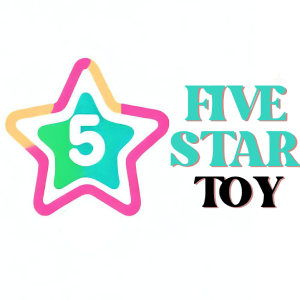
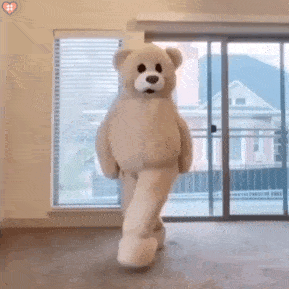


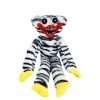
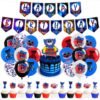

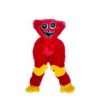
Leave A Comment